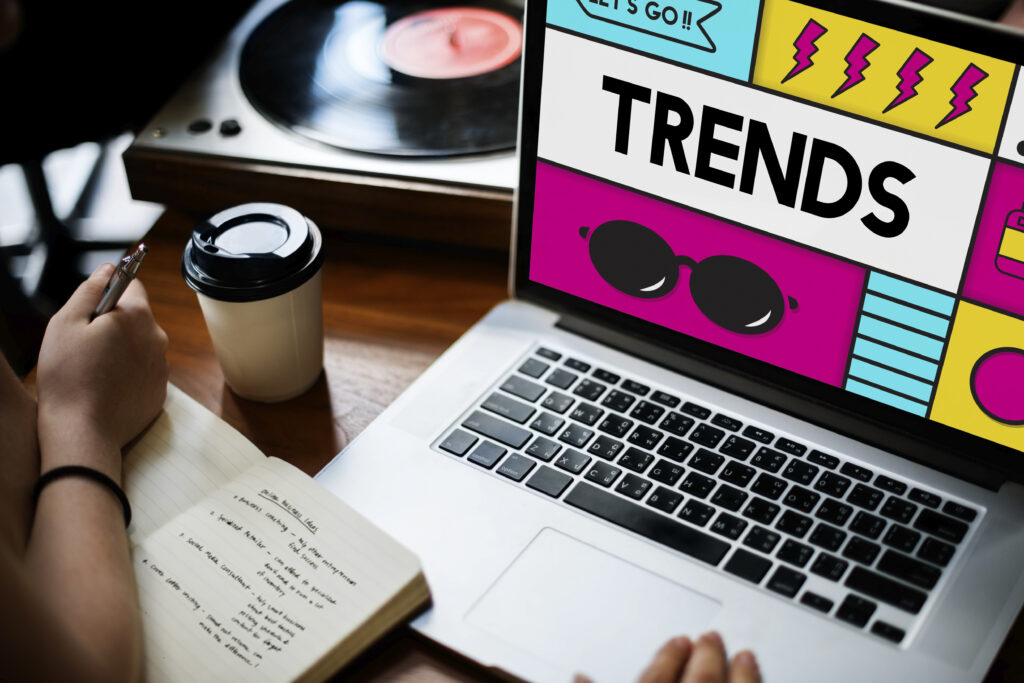Top Digital Marketing Trends to Watch in 2025
In the ever-evolving world of digital marketing, businesses must stay ahead of the curve to ensure they remain relevant and competitive. As technology continues to advance, several emerging trends are reshaping how brands engage with their audiences, personalize experiences, and optimize their marketing efforts. In this article, we will explore the top digital marketing trends to watch in 2025, providing insights into how businesses can capitalize on these shifts.
🚀 Stay ahead of the game and embrace the future of marketing. Explore these key trends to keep your business on top in 2025!

How Will AI Shape Digital Marketing in 2025?
Artificial intelligence (AI) has already made significant strides in the digital marketing world, but its influence is expected to grow even more in 2025. As AI tools continue to evolve, they will not only transform how marketers approach automation and personalization but also redefine entire marketing strategies. In 2025, AI will be the backbone of digital marketing, enabling businesses to deliver highly targeted, personalized experiences while improving efficiency and reducing manual workloads.
From AI-powered chatbots that provide real-time customer support to predictive analytics that help brands forecast consumer behavior, AI will streamline operations and offer deeper insights into audience preferences. Marketers will rely on AI to analyze vast amounts of data, predict trends, and optimize campaigns for maximum impact.
1. AI-Powered Personalization & Automation
Personalization has always been a cornerstone of effective marketing, but in 2025, it will reach new heights. Thanks to AI, marketers can now deliver hyper-targeted, individualized experiences for consumers across various channels. Whether it’s personalized emails, website content, or product recommendations, AI enables businesses to create tailored interactions that resonate with their audience.
Automation will also play a crucial role in scaling personalized marketing efforts. AI-driven automation tools will help businesses optimize campaigns by sending the right message to the right person at the right time, without manual intervention. This seamless integration of AI-powered personalization and automation will allow brands to build stronger relationships with customers while improving conversion rates.
2. Generative Engine Optimization (GEO)
As search engines become more intelligent, traditional SEO strategies will evolve to accommodate the rise of generative engines. In 2025, search engines like Google will rely on AI-driven responses, which means businesses must rethink how they optimize their content.
Generative Engine Optimization (GEO) is the process of adapting content for AI-driven responses rather than relying solely on keyword-focused SEO tactics. GEO involves creating content that answers questions in a more conversational manner, offering clear, concise, and valuable information that AI systems can easily interpret. Marketers will need to ensure that their content is optimized for these generative engines to improve visibility and rank higher in search results.
3. Voice & Visual Search
The growing popularity of voice assistants and visual search technology is changing how consumers search for information online. In 2025, optimizing content for voice and visual search will be a key priority for digital marketers.
Voice search allows users to ask questions aloud, and businesses will need to optimize their content for natural language queries. To succeed, brands must use conversational keywords and phrases that align with how people speak.
Visual search, on the other hand, enables users to search for products by uploading images. This trend will lead to increased demand for visually appealing, high-quality images, and videos on websites and e-commerce platforms. Marketers will need to optimize their visual content for easy identification and indexing by search engines, ensuring their products are discoverable through visual search.
4. Social Commerce
Social media platforms are no longer just spaces for engagement and content sharing—they’re becoming full-fledged shopping destinations. By 2025, social commerce will be a game-changer, offering businesses new ways to sell products directly through platforms like Instagram, Facebook, and TikTok.
The rise of social commerce means that marketers must rethink their social media strategies, focusing on shoppable posts, seamless checkout experiences, and influencer collaborations. Businesses will need to leverage social media’s unique ability to connect with consumers on a personal level while providing an easy, frictionless shopping experience.
5. Immersive Storytelling with AR/VR
Augmented reality (AR) and virtual reality (VR) are quickly becoming powerful tools in digital marketing. In 2025, brands will increasingly use these technologies to create immersive experiences that engage consumers in new and exciting ways.
AR and VR allow businesses to transport their audience into virtual environments where they can interact with products, explore services, and experience stories like never before. Whether it’s trying on clothes virtually, touring a new home, or experiencing a destination through VR, these technologies will enhance the consumer journey and create unforgettable brand experiences.
6. Ethical Marketing & Data Privacy
As consumers become more conscious of how their data is used, ethical marketing and data privacy will take center stage in 2025. Businesses will need to prioritize transparency and ethical practices to build trust with their audience.
Brands that adopt ethical marketing practices—such as clear data privacy policies, responsible data collection, and transparent advertising—will stand out in an increasingly competitive market. Consumers will favor companies that respect their privacy and are transparent about how their data is being used.
7. Social Listening & Micro-Virality
In today’s fast-paced digital world, virality is no longer the only measure of success. In 2025, brands will shift their focus to micro-virality—the ability to connect with niche audiences in meaningful ways.
Social listening will play a key role in identifying these niche communities. By monitoring social media conversations and analyzing consumer sentiment, brands can discover emerging trends, respond to customer needs, and create content that resonates deeply with smaller, targeted groups. This strategy will enable businesses to foster more authentic connections and build loyal, engaged communities.
8. Cross-Industry Collaboration
In 2025, we will see more businesses collaborating across industries to address complex challenges and drive innovation. Cross-industry partnerships will allow brands to combine expertise, resources, and technologies to create groundbreaking solutions that benefit both industries.
For example, a tech company might partner with a healthcare provider to create digital health solutions, or a fashion brand could team up with a sustainability-focused organization to promote eco-friendly products. These collaborations will not only help businesses stay competitive but also offer new opportunities for growth and innovation.
9. Rogue Content
As user-generated content continues to dominate the digital landscape, brands must navigate the rise of rogue content. Rogue content refers to unregulated or unofficial content created by influencers, consumers, or competitors that can potentially damage a brand’s reputation.
In 2025, businesses will need to be vigilant in monitoring rogue content and developing strategies to address it. This could include using AI tools to track mentions, responding to negative content proactively, or fostering positive user-generated content through engagement and incentives.
10. Generative AI-Driven Storytelling
Generative AI will play a pivotal role in shaping content creation in 2025. Using AI-driven tools, businesses can produce personalized, real-time content that speaks directly to individual consumers.
Generative AI-powered storytelling will allow brands to craft narratives that adapt to the needs and preferences of each audience segment. By analyzing data, understanding consumer behavior, and generating dynamic content, businesses can provide tailored experiences that resonate with their audience on a deeper level.
The digital marketing landscape in 2025 will be shaped by cutting-edge technologies, changing consumer behavior, and new industry trends. To remain competitive, businesses must embrace these shifts and adapt their strategies accordingly. Whether it’s leveraging AI for personalization, diving into social commerce, or creating immersive experiences with AR/VR, staying ahead of the trends will be essential for success.
By adopting these trends and refining your marketing strategies, you’ll be well-equipped to thrive in the dynamic digital landscape of 2025.

🔗 Stay ahead in the game—start integrating these trends into your strategy today!
🔗 Sources to Read Up On:
- AI-Powered Ad Creation
- The Rise of Social Commerce
- Generative Engine Optimization
